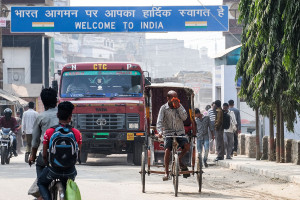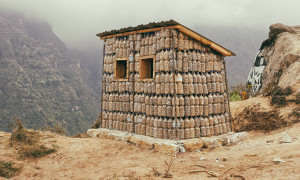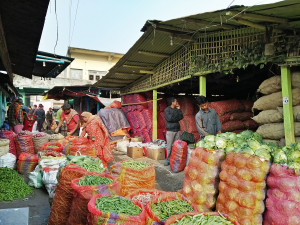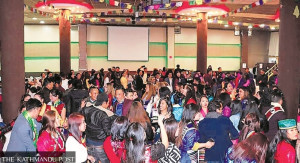Money
Stronger dollar, customs duty push up prices of summer apparel and accessories
Traders say that tariff changes imposed by the Trump administration have not had any noticeable effect on the pricing of imported clothing and related goods.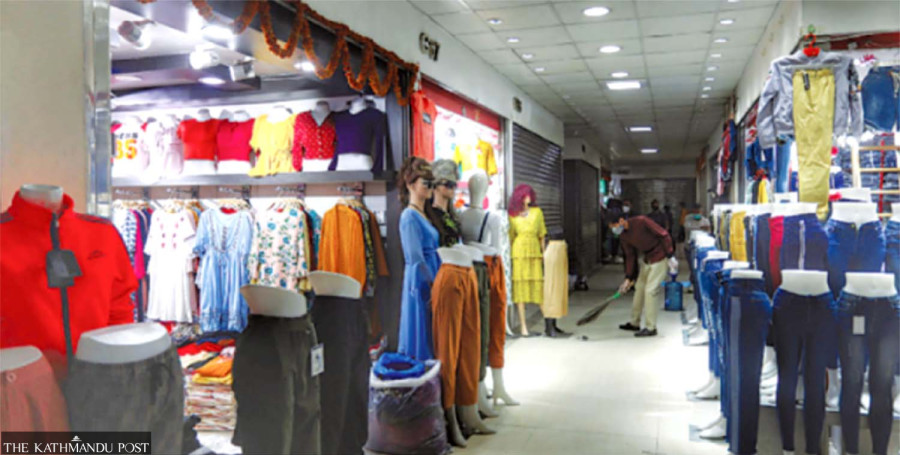
Post Report
With temperatures on the rise, clothing, shoes, and bag stores across Kathmandu Valley have begun launching their summer collections. Prices, however, have gone up, primarily due to their imports in dollar terms.
Ganga Bahadur Ghimire, senior vice-president of the Nepal Trans Himalayan Border Commerce Association, said that fluctuations in the exchange rate have slightly impacted the price of summer clothing, footwear, bags, and fashion jewellery. The rise in the value of the US dollar over months, along with a modest increase in the Chinese yuan, has caused clothing prices to increase by about 5 to 7 percent.
A year ago, one US dollar was valued at Rs133.80, but it has now reached Rs136.90. Similarly, the Chinese yuan, which cost Rs18.51 per unit, is now Rs18.75, according to data from Nepal Rastra Bank.
The central bank reports that year-on-year inflation on clothes and footwear rose to 7.01 percent by mid-March, compared to the same period last fiscal year.
Despite international concerns, Ghimire noted that the US tariff changes imposed by the Trump administration have not had any noticeable effect on the pricing of imported clothing and related goods.
Ghimire also said there is still a strong demand for fashionable and trendy apparel, shoes, bags, and accessories. Retailers focused on selling trendy products sometimes struggle to meet this demand. Customers are eager to update their wardrobes for the season, especially with items that help them stay cool in the heat.
Popular choices among male shoppers include cotton shirts, T-shirts, and sandals. Among female shoppers, shorts, baggy pants, skirts, and sleeveless T-shirts are notably in demand.
Traders added that light windcheaters are also selling well as temperatures continue to rise.
Although some items of clothing, bags, or shoes may seem expensive, Ghimire explained that the cost is often justified by their quality.
According to the association, imports through the major northern border points—Tatopani and Kerung—are operating normally. China supplies about 80 percent of Nepal's demand for readymade garments. In the Kathmandu Valley alone, nearly 80 percent of readymade clothes on the market come from China. The remainder is mostly sourced from India.
Each day, around 15 to 20 truckloads of goods enter Nepal from the Tatopani border, while about 20 to 25 trucks come through the Kerung point. Ghimire noted that traders currently pay a 20 percent customs duty on readymade garments, 40 percent on footwear, and 30 percent on bags.
These customs duties are one of the main reasons behind the rising retail prices.
Data from the Department of Customs shows that Nepal imported readymade garments worth Rs33.26 billion and about 13.31 million pairs of footwear worth Rs6.55 billion during the last fiscal year.
Januka Sapkota, owner of Januka Fashion Wear in Kumaripati, said that online demand for her store’s clothing has been strong. She receives at least 10 orders daily, mostly for baggy jeans, short skirts, shorts, T-shirts, and crop tops. She sells through both an online platform and a physical store.
She said that footfall in her store is better now than the period immediately after the Covid-19 pandemic. The price of jeans-related clothing has gone up by Rs100 to Rs150 apiece, depending on the design and quality. T-shirts have seen similar price increases.
Sapkota added that items with unique designs or special materials tend to cost more. Many of her customers ask for clothes that resemble those worn by influencers on social media. College-going girls and working women make up the bulk of her customer base.
Traders have also observed a significant rise in online buyers for clothing and footwear, which has helped boost sales overall.
While there are still some fraudulent sellers, many genuine and established stores in Kathmandu Valley now operate online and receive orders from across the country—from the eastern to western plains.




 11.12°C Kathmandu
11.12°C Kathmandu





